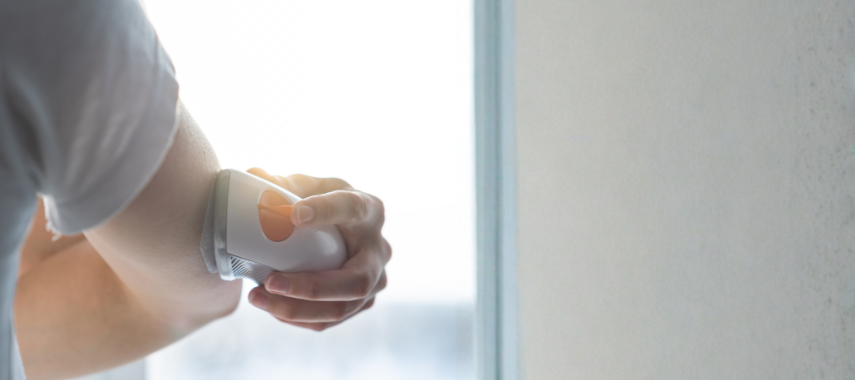Diabetes or diabetes mellitus is a condition that occurs when the body cannot properly convert food into energy. When food digests, all carbohydrates are broken down into sugar and released into the bloodstream. For the body to utilize the sugar, the pancreas must release insulin, a hormone that helps cells convert the sugar into energy. There is no cure for diabetes, but it may be possible to reverse it or make it easier to manage depending on which type of diabetes you have.
Type 2 Diabetes
Those diagnosed with Type 2 diabetes have trouble producing enough insulin for their body and are considered insulin resistant. Their cells have trouble utilizing the produced insulin, making it difficult to maintain normal blood sugar levels. According to the Centers for Disease Control, 90-95% of those diagnosed with diabetes have this type. Type 2 diabetes generally develops slowly over time, with most people developing prediabetes before their diagnosis. Most people diagnosed with type 2 are adults, but with childhood obesity rising, more children and adolescents are developing type 2 diabetes.
Diabetes can lead to serious health problems such as heart disease or stroke. Mismanaged blood sugar levels can also cause eye complications and nerve damage in the feet that cause numbness and tingling. The longer you have diabetes, the more likely you are to be at risk of developing more severe conditions.
Type 2 Diabetes and Weight Loss
Being overweight or obese is the primary risk factor in developing type 2 diabetes. For most people diagnosed with type 2, losing weight can lower their blood pressure and increase their insulin sensitivity making it easier to manage their blood glucose levels. Losing weight can also help those diagnosed with prediabetes avoid developing type 2 or, at the very least, slow its progression. According to the American Diabetes Association, exercise, healthy eating, and weight loss are proven approaches to delay and potentially reverse a type 2 diabetes diagnosis. Here are a few lifestyle changes to encourage weight loss and minimize the risk of developing severe health conditions:
- Drink more water – when you’re thirsty, reach for water instead of sugary sodas or teas that can cause your blood glucose to rise.
- Portion your food – portion your meals out to avoid overeating and consuming too many calories. Extra calories and fat in the diet can cause undesirable high blood sugar levels.
- Eat at regular intervals – eating three meals a day at regular times can help your body better utilize the insulin that your body already has or that you get through diabetes medication, such as metformin or other supplements.
- Reach for healthier foods – it’s challenging to eat healthy foods all the time, but try to consume more healthy carbohydrates such as fruits, vegetables, whole grains, legumes, and low-fat dairy.
- Create a meal plan – a meal plan can help you stick to a low-calorie diet and avoid eating unhealthy carbs because you didn’t have a meal already planned.
- Avoid foods high in fat – to lower your risk of heart disease, avoid foods high in saturated fats, trans fats, cholesterol, and sodium.
- Regular exercise – set aside time each day for physical activity, such as walking, swimming, or a low-impact workout. Talk to your doctor about how much movement is suitable for you and slowly increase it until you meet your goals.
Bariatric Surgery
For individuals with a BMI of 35 or higher, bariatric surgery or gastric bypass surgery can be a helpful way to treat type 2 diabetes. In most cases, bariatric surgery can result in significant weight loss, up to 25% of the patient’s body weight, and cause diabetes remission. If you are interested in bariatric surgery for weight loss, it’s important to seek medical advice from your healthcare provider to see if you would be a good candidate.
Type 1 Diabetes
Unlike type 2 diabetes, those diagnosed with type 1 cannot regulate their blood sugar levels without insulin. Type 1 diabetes can be considered an autoimmune disease because the body destroys the beta cells in the pancreas that produce insulin. Without these cells, the body produces very little insulin or none at all. While dietary changes and regular exercise can help manage glucose levels and promote a lower HbA1c, type 1 diabetes is a chronic disease and cannot be reversed.
References
“Diabetes and Foot Problems.” National Institute of Diabetes and Digestive and Kidney Diseases, U.S. Department of Health and Human Services, 2017
“How Type 2 Diabetes Progresses.” How Type 2 Diabetes Progresses | ADA
Kashyap, Sangeeta R, et al. “Bariatric Surgery for Type 2 Diabetes: Weighing the Impact for Obese Patients.” Cleveland Clinic Journal of Medicine, U.S. National Library of Medicine, July 2010
“Preventing Type 2 Diabetes.” National Institute of Diabetes and Digestive and Kidney Diseases, U.S. Department of Health and Human Services
“What Is Diabetes?” Centers for Disease Control and Prevention, Centers for Disease Control and Prevention, 11 June 2020
Information provided on the Aeroflow Diabetes blog is not intended as a substitute to medical advice or care. Aeroflow Diabetes recommends consulting a doctor if you are experiencing medical issues or concerns.






